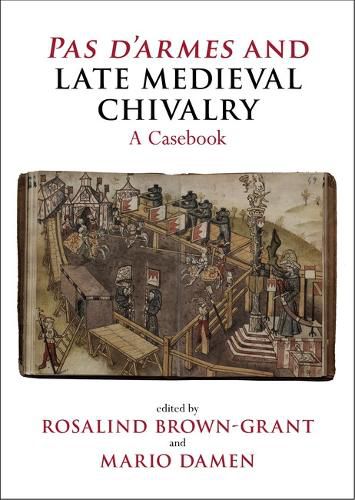Readings Newsletter
Become a Readings Member to make your shopping experience even easier.
Sign in or sign up for free!
You’re not far away from qualifying for FREE standard shipping within Australia
You’ve qualified for FREE standard shipping within Australia
The cart is loading…






An Open Access edition will be available on publication thanks to generous funding from the Arts and Humanities Research Council; the University of Leeds; Drury University; Northwestern University; the University of Neuchatel; and the Fondation pour la Protection du Patrimoine Culturel, Historique et Artisanal (Switzerland).
This Casebook features the work of an international, interdisciplinary research group entitled 'The Joust as Performance: Pas d'armes and Late Medieval Chivalry' and funded by the UK's Arts and Humanities Research Council. Its focus is on the pas d'armes (English: 'passage of arms'), a highly ritualised form of tournament and elite entertainment that was popular principally in Anjou, the Burgundian lands, France and Iberia in the fifteenth and early sixteenth centuries. Part I of the volume provides a representative selection of sixteen translated and contextualised sources on the pas d'armes that includes narrative texts, administrative accounts and illuminated images. Part II, which comprises seven new scholarly essays on the pas d'armes, addresses the issue of how this type of tournament evolved through cultural transfer from court to court, offers in-depth analyses of a chronological and geographical range of pas d'armes from the perspective of text-image relations, heraldry, urban-court relations and manuscript commissioning, and focuses on broader themes such as the construction of masculinity and the representation of chivalric and non-chivalric bodies at these events. The Casebook also provides a map and table of all such tournaments known to have taken place between c. 1420 and c. 1520, some of which have been identified for the first time as pas d'armes, as well as a glossary of arms and armour, clothing and textiles typically featured at this type of event. It will be of interest to both specialist scholars and students of late medieval chivalric and tournament culture.
$9.00 standard shipping within Australia
FREE standard shipping within Australia for orders over $100.00
Express & International shipping calculated at checkout
An Open Access edition will be available on publication thanks to generous funding from the Arts and Humanities Research Council; the University of Leeds; Drury University; Northwestern University; the University of Neuchatel; and the Fondation pour la Protection du Patrimoine Culturel, Historique et Artisanal (Switzerland).
This Casebook features the work of an international, interdisciplinary research group entitled 'The Joust as Performance: Pas d'armes and Late Medieval Chivalry' and funded by the UK's Arts and Humanities Research Council. Its focus is on the pas d'armes (English: 'passage of arms'), a highly ritualised form of tournament and elite entertainment that was popular principally in Anjou, the Burgundian lands, France and Iberia in the fifteenth and early sixteenth centuries. Part I of the volume provides a representative selection of sixteen translated and contextualised sources on the pas d'armes that includes narrative texts, administrative accounts and illuminated images. Part II, which comprises seven new scholarly essays on the pas d'armes, addresses the issue of how this type of tournament evolved through cultural transfer from court to court, offers in-depth analyses of a chronological and geographical range of pas d'armes from the perspective of text-image relations, heraldry, urban-court relations and manuscript commissioning, and focuses on broader themes such as the construction of masculinity and the representation of chivalric and non-chivalric bodies at these events. The Casebook also provides a map and table of all such tournaments known to have taken place between c. 1420 and c. 1520, some of which have been identified for the first time as pas d'armes, as well as a glossary of arms and armour, clothing and textiles typically featured at this type of event. It will be of interest to both specialist scholars and students of late medieval chivalric and tournament culture.